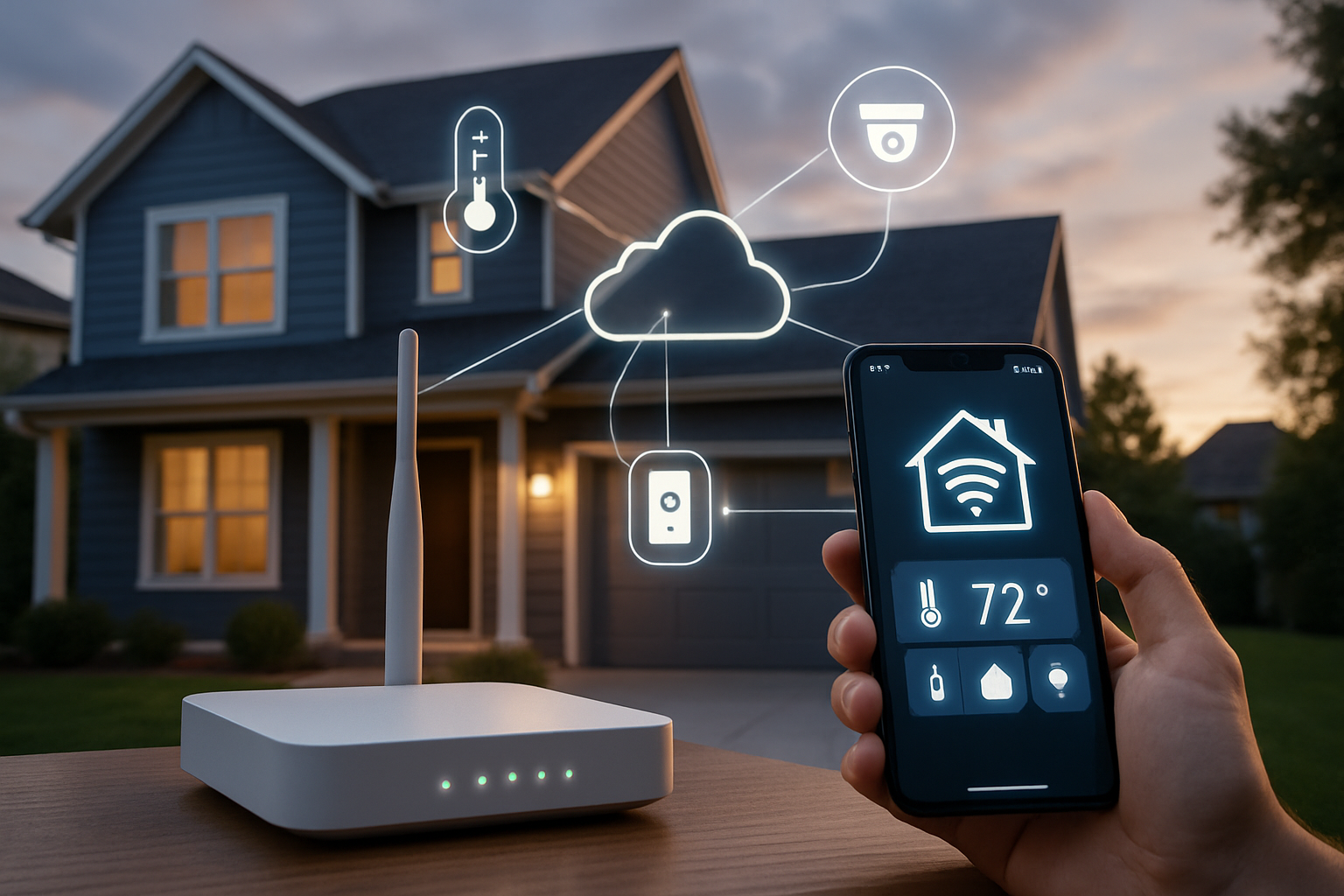Smart Home Systems and Solar Energy Integration
Smart home technology brings devices, sensors, and controls together so everyday tasks can run with less manual effort. Modern systems combine automation, a central control panel, and smartphone access to adjust lighting, heating, security, and energy flows. Integrating solar panels and battery storage adds another layer: on-site solar energy can power devices and inform automation rules for efficiency and resilience.

How do solar panels fit into a smart home?
Solar panels generate DC electricity that is converted to usable AC power through an inverter. In a smart home, inverters, battery inverters, and energy managers communicate with the home automation platform to route power where it’s needed. That means appliances, heating, and electric vehicle chargers can prioritize on-site solar energy when available. Monitoring tools show real-time production and can trigger automation — for example, delaying a dishwasher cycle until midday solar output peaks.
Many smart home hubs support integration with solar inverters or energy-monitoring devices via standard protocols or API connections. Where direct integration isn’t available, separate energy meters can feed consumption and generation data into the control panel so automation rules reflect actual solar output and grid usage.
Can I control my home with a smartphone?
Yes. Smartphone apps are a primary interface for smart homes, providing remote access to devices, status monitoring, and scene activation. Most systems offer iOS and Android apps that display device panels, energy dashboards, and live camera feeds. Through the app, you can set schedules, receive alerts, and initiate manual overrides when automation doesn’t match immediate needs.
Smartphone control also enables location-based actions: geofencing can lock doors, adjust climate settings, or switch to solar-priority modes when you leave or return. For privacy and reliability, review app permissions, enable two-factor authentication, and consider local control options that function even if internet connectivity is lost.
What is automation in a smart home?
Automation refers to rules, routines, or scripts that coordinate devices without continuous human input. Typical automations include timed lighting, climate setpoint adjustments based on occupancy, and sequences that arm security systems when everyone leaves. In an energy-focused setup, automation can shift high-energy tasks to periods of abundant solar energy, or reduce charging rates to match available generation.
Automation logic can be simple (time-based schedules) or complex (conditional rules using multiple sensors and external data like weather forecasts or energy tariffs). Reliable automation benefits from robust sensors—motion, door/window, temperature, and power meters—and a stable control panel that executes rules consistently.
What does a control panel do in smart homes?
A control panel, or hub, is the central coordinator that connects devices and enforces automation. It translates inputs from sensors and apps into actions across lights, thermostats, locks, and energy components. Control panels vary from cloud-hosted services to local hubs that prioritize privacy and offline functionality.
Key features to consider include protocol support (Zigbee, Z-Wave, Wi‑Fi), energy monitoring capabilities, and integration with third-party services such as solar inverter APIs or utility demand-response programs. A well-chosen control panel simplifies creating scenes, managing priorities (comfort versus energy saving), and viewing consolidated status information, including solar energy production and battery state.
How does solar energy affect energy management?
Solar energy changes the home energy equation by providing on-site generation that can reduce grid dependence during daylight hours. When paired with batteries and intelligent control, solar systems can flatten demand peaks, shift consumption to match generation, and offer backup power in outages. Smart energy management uses data from solar panels, meters, weather forecasts, and usage patterns to make decisions that balance cost, resilience, and comfort.
Integration examples include automatically running pool pumps or water heaters during peak solar production, charging batteries when excess generation is available, or reducing HVAC loads when cloud cover drops solar output. For homes in areas with time-of-use tariffs, smart systems can also coordinate grid charging of batteries at low-cost times and discharge during expensive periods.
Conclusion
Smart homes combine automation, a control panel, and smartphone interfaces to create flexible, efficient living environments. Adding solar panels and solar energy storage extends these capabilities by supplying on-site power and enabling energy-aware automations. When planning a system, consider device compatibility, data visibility, privacy and local services for installation and maintenance so that the automation you design reliably reflects both your lifestyle and the dynamics of your home’s energy supply.






